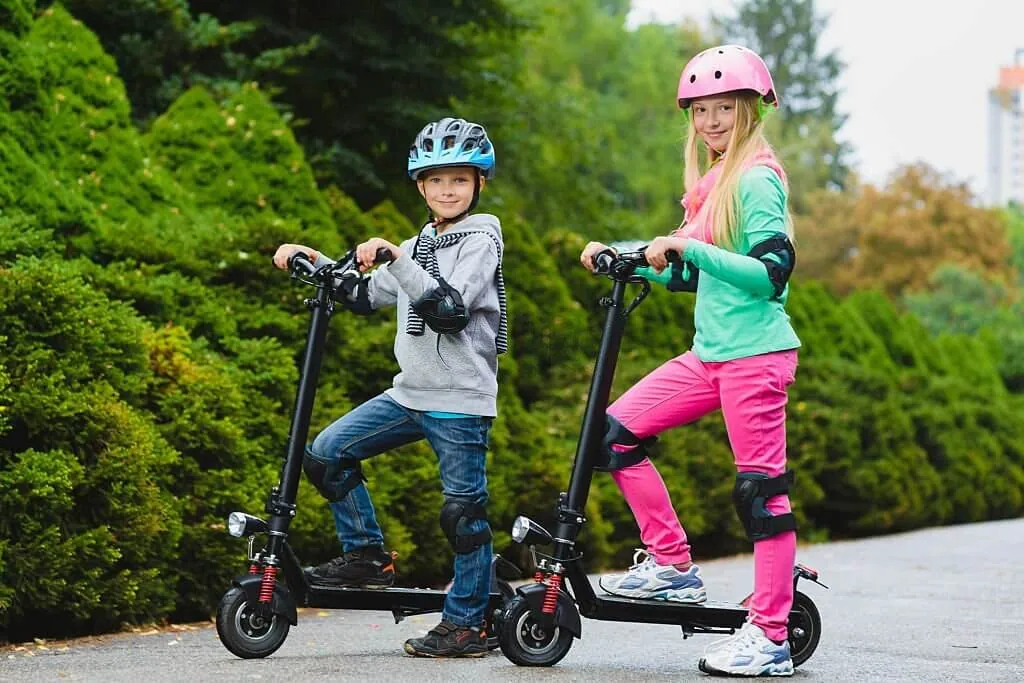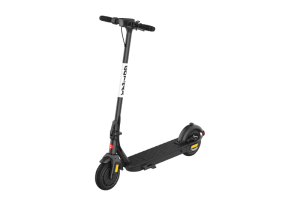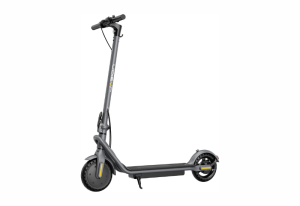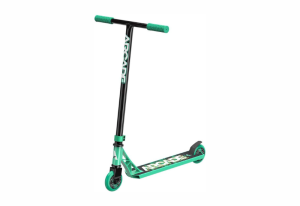Ensuring your child’s safety while they ride their scooter is imperative and one of the most important steps you can take as a parent. Choosing the right helmet for your child can be confusing and overwhelming with the plethora of options available in the market. However, with the right information and guidance, you can make an informed decision that will provide maximum protection for your child.
Table of Contents
ToggleUnderstanding the Types of Kids Scooter Helmets
Clearly, when it comes to kids scooter helmets, there are several types to choose from. Each type offers different levels of protection and features that cater to specific needs. It’s important for parents to understand the differences between the various types of helmets so they can make an informed decision when selecting the right helmet for their child. Recognizing the distinctions between helmet types allows parents to better assess which helmet will provide the best protection and comfort for their child.
| Helmet Type | Description |
| Multi-Sport Helmets | Versatile helmets suitable for a range of activities. |
| Scooter Specific Helmets | Designed specifically for scooter riding, offering features tailored to scooter enthusiasts. |
| Full-face Helmets | Covers the entire head and provides additional protection for the face and chin. |
| Half-shell Helmets | Offer partial head coverage and are popular for their lightweight and breathable design. |
| Mountain Bike Helmets | Built to withstand the rigors of off-road and mountain biking, often suitable for scooter riding as well. |
Multi-Sport Vs. Scooter Specific Helmets
Helmets designed for multiple sports are versatile and suitable for various activities, whereas scooter-specific helmets are tailored to the needs of scooter riders. While multi-sport helmets offer flexibility, scooter-specific helmets may provide features specifically geared towards scooter enthusiasts, such as enhanced ventilation and aerodynamics. When choosing between the two, it’s important to consider the primary use of the helmet and the specific needs of the child.
Full-face Helmets: Advantages and Limitations
Helmets that offer full-face coverage provide additional protection for the face and chin, which can be crucial for high-impact sports. However, they may be heavier and less breathable compared to other helmet types. It’s vital for parents to weigh the benefits of increased protection with the potential drawbacks of reduced comfort and airflow to ensure the child’s safety without compromising on comfort.
Full-face helmets are especially popular among parents whose children engage in aggressive riding activities, such as downhill scooter riding or BMX racing where the risks of facial and chin injuries are higher.
Half-shell Helmets: Pros and Cons
Advantages of half-shell helmets include their lightweight and breathable design, offering enhanced comfort for the wearer. However, their partial head coverage may provide less protection compared to full-face helmets, particularly for facial and chin areas. It’s important for parents to consider the specific needs and preferences of their child when deciding on the level of protection offered by different helmet types.
| Advantages | Limitations |
| Lightweight and breathable | Limited protection for the face and chin |
| Comfortable for long rides | Less coverage compared to full-face helmets |
Types of half-shell helmets include traditional skate-style helmets and modern, sleek designs tailored for scooter and BMX riders.
Essential Factors to Consider When Choosing a Helmet
For parents, selecting the right kids scooter helmet is a crucial decision. The safety of your child is paramount, and the helmet plays a pivotal role in ensuring their protection. When choosing a helmet, there are several key factors to consider to ensure that it provides the necessary level of safety and comfort for your child.
Size and Fit: The Key to Effective Protection
Choosing the correct size and ensuring a proper fit is essential for kids scooter helmets to provide effective protection. A helmet that is too large may not stay in place during a fall, while one that is too small can be uncomfortable and restrict airflow. It is important to measure your child’s head and choose a helmet that matches their head size. Additionally, adjustable straps and padding can help customize the fit for added comfort and security.
Thou, always ensure that the helmet sits level on the head, with the front edge no more than an inch above the eyebrows, and make sure the chinstrap is securely fastened.
Material and Construction: What Makes a Helmet Safe
An important aspect of kids scooter helmets safety is the material and construction. Helmets are typically made with a hard outer shell and a foam inner liner to absorb impact. Look for helmets that are certified and meet safety standards, such as CPSC or ASTM. This ensures that the helmet has undergone rigorous testing and will provide adequate protection in the event of a fall or collision. Additionally, consider the weight of the helmet, as a lighter weight helmet can be more comfortable for children to wear for extended periods.
This essential factor can determine the helmet’s ability to withstand impact and protect your child’s head, making it crucial to prioritize safety and quality when selecting a kids scooter helmet.
Ventilation: Balancing Comfort and Safety
Essential to consider when choosing a kids scooter helmet is the ventilation system. Proper ventilation is crucial for ensuring that your child stays cool and comfortable while wearing the helmet, especially during hot weather or extended play sessions. Look for helmets with vents that allow for airflow without compromising on safety. A well-ventilated helmet will help prevent overheating and discomfort, encouraging your child to wear the helmet consistently.
Comfort and safety should go hand in hand, and a well-ventilated helmet can provide both protection and an enjoyable riding experience for your child.
A Step-by-Step Guide to Measuring Your Child’s Head for a Helmet
Keep your child safe by ensuring their scooter helmet fits properly. One of the most crucial steps in finding the right helmet is measuring your child’s head accurately. Here’s a step-by-step guide to help you get it right:
| Step 1: | Tools You’ll Need |
| Step 2: | Measuring for the Perfect Fit |
| Step 3: | Adjusting for Growth: Tips and Tricks |
Tools You’ll Need
Need to gather a soft measuring tape and a mirror. The soft measuring tape will provide the most accurate measurement, and the mirror will help you ensure that the tape is level around your child’s head.
Measuring for the Perfect Fit
To ensure a proper fit, place the measuring tape about 1 inch above your child’s eyebrows and wrap it around the widest part of the head. This typically falls about 1 inch above the ears. Take note of the measurement in inches, and refer to the helmet sizing chart provided by the manufacturer to select the appropriate size.
A properly fitting helmet is crucial in providing maximum protection for your child. Avoid the temptation to size up in the hopes that the helmet will last longer as this compromises safety.
Adjusting for Growth: Tips and Tricks
Tools you have already gathered come in handy when adjusting the helmet for growth. The soft measuring tape can be used regularly to ensure the helmet still fits correctly. If the helmet has an adjustable fit system, such as a dial at the back, utilize it to customize the fit as your child grows.
- Regularly check and adjust the fit of the helmet as needed.
- Assume that your child’s head will grow and the helmet will need adjustments over time.
Assume that as your child grows, their helmet will require adjustments to continue providing proper protection. Keeping a close eye on the fit and making necessary adjustments will ensure your child remains safe while enjoying their scooter rides.
The Role of Safety Standards and Certifications
Now that you’ve decided to invest in a kids’ scooter helmet, it’s essential to understand the role of safety standards and certifications in ensuring the helmet’s effectiveness in protecting your child. Safety standards and certifications are designed to guarantee that the helmet meets specific safety requirements and has undergone rigorous testing to provide the highest level of protection.
Understanding CPSC and Other Certifications
Standards set by the Consumer Product Safety Commission (CPSC) are the primary benchmark for helmet safety in the United States. CPSC-certified helmets meet specific impact standards and are designed to protect against skull fractures and severe head injuries. In addition to CPSC, helmets may also carry certifications from other organizations such as ASTM International and Snell, which have their own set of rigorous testing criteria to ensure maximum protection.
How to Verify Helmet Certifications
Other than the CPSC sticker, look for labels or marks indicating ASTM or Snell certifications on the helmet. You can also verify the certification by checking the manufacturers’ website or reaching out to customer support for confirmation. It’s crucial to ensure that the helmet meets the necessary safety standards to provide adequate protection for your child.
Certifications such as CPSC, ASTM, and Snell demonstrate that the helmet has undergone thorough testing and meets specific safety requirements, providing parents with the assurance that their child’s head is adequately protected during scooter rides.
The Importance of Choosing Certified Helmets
Certifications provide parents with the peace of mind that the helmet has met stringent safety requirements and undergone rigorous testing. Choosing a certified helmet ensures that your child is protected from the most common and dangerous head injuries that can occur during scooter accidents. It’s crucial for parents to prioritize safety and select helmets with the appropriate certifications to safeguard their child’s well-being.
Stylish Yet Safe: Tips for Choosing a Helmet Your Child Will Love to Wear
After investing in a kids scooter, the next step is to ensure that your child stays safe and protected while riding it. One essential item for every young scooter rider is a helmet. However, getting your child to wear their helmet can be a challenge. Here are some tips to help you find a helmet that your child will love to wear.
Incorporating Your Child’s Preferences
Childs‘ preferences play a significant role in ensuring they happily wear their helmet. Selecting a helmet in their favorite color, featuring their beloved cartoon character, or with a cool pattern can make all the difference. Let your child be involved in the process of choosing their helmet so they feel a sense of ownership and pride in wearing it.
Popular Designs and Themes for Kids
The variety of designs and themes available for kids’ helmets is immense. From vibrant solid colors to helmets adorned with superheroes, princesses, animals, and sports motifs, there is a helmet to suit every child’s taste. The right design can make wearing a helmet a fun and exciting experience for your child.
Tips for selecting a popular design or theme include considering your child’s interests, favorite colors, and any characters or motifs they are currently passionate about. Allowing them to express themselves through their helmet choice can encourage them to wear it willingly and proudly.
Balancing Aesthetics and Safety Features
Incorporating the aesthetics that your child loves with safety features is crucial. Look for helmets that not only have the visual appeal your child desires but also prioritize safety with features such as impact-resistant materials, adjustable straps, and proper ventilation. It’s equally important to find a helmet that is comfortable for your child to wear for extended periods of time.
Safety should always be the top priority when selecting a helmet for your child, but finding a stylish design that they will be excited to wear can make a significant difference in their willingness to prioritize safety while riding their scooter. Balance is key when choosing a helmet, ensuring that it meets safety standards while also appealing to your child’s personal taste.
Maintenance and Care: Ensuring Long-term Protection
Your child’s safety is of utmost importance, and ensuring the long-term protection of their scooter helmet requires proper maintenance and care. By taking proactive measures to keep the helmet in good condition, you can prolong its effectiveness and provide ongoing safety for your child.
Regular Cleaning and Inspection
To maintain the reliability and durability of your child’s scooter helmet, it is essential to regularly clean and inspect it. Use a mild soap and water to clean the exterior and interior of the helmet, and make sure to dry it thoroughly before use. Inspect the helmet for any cracks, dents, or loose components, and replace any damaged parts immediately to ensure the helmet’s continued effectiveness in protecting your child.
When to Replace a Helmet: Signs of Wear and Tear
Helmet integrity is crucial for maximum safety and protection. As helmets age, they are prone to wear and tear, reducing their ability to safeguard against impact. Regularly inspect the helmet for signs of wear, including scratches, dents, fading, or any damage to the inner lining. If any of these signs are present, it is time to replace the helmet to maintain optimal safety for your child.
With frequent use and exposure to varying elements, a helmet’s effectiveness can diminish over time. It is vital to stay vigilant and replace the helmet when necessary to ensure that your child’s safety is not compromised.
Storing Helmets Properly to Extend Life Span
Carefully storing your child’s scooter helmet when not in use is imperative to preserve its integrity and extend its life span. Store the helmet in a cool, dry place away from direct sunlight and extreme temperatures. Avoid placing heavy objects on top of the helmet, as this can cause damage to its structure and compromise its protective capabilities.
Extend the life span of your child’s helmet by following proper storage practices and handling, ensuring that it remains in optimal condition and continues to provide the necessary protection during scooter rides.
Making Safety a Family Affair: Encouraging Helmet Use Among Kids
To ensure the safety of your child, it is essential to make helmet-wearing a family affair. By promoting helmet use among kids and adults alike, you can create a culture of safety and responsibility within your household. This not only sets a positive example for your children, but also helps to protect the entire family from the risks of head injuries.
Leading by Example: Why Adults Should Wear Helmets Too
Should adults wear helmets when riding scooters with their kids? Absolutely. By wearing a helmet yourself, you demonstrate to your children the importance of protecting your head while engaged in outdoor activities. This can instill a sense of responsibility and safety consciousness in your kids, and make helmet-wearing a natural part of any outdoor adventure.
Fun and Creative Ways to Promote Helmet Use
The key to getting kids to wear helmets is to make it fun and engaging. The best way to do this is by letting kids choose their own helmet with designs or colors they love. Another idea is to organize a “Helmet Decorating Day” where kids can personalize their helmets with stickers, paint, or markers. This makes helmet-wearing a creative and expressive activity rather than a chore.
Helmet accessories like colorful covers, lights, or reflective stickers can also add an element of excitement to the helmet-wearing experience, making it more appealing to kids.
Addressing Resistance: Tips for Parents
Kids may resist wearing helmets for various reasons, but as a parent, you can address these challenges. Encourage open communication and explain the importance of safety in a clear and calm manner. Offer rewards for consistent helmet use, such as extra playtime or a special outing. Additionally, involve other parents and their children in your efforts to create a community of helmet-wearing kids.
- Lead by example and wear your helmet whenever you ride with your child.
- Make helmet-wearing a non-negotiable rule for all outdoor activities.
- Recognizing and addressing any fears or concerns your child may have about wearing a helmet.
Ways to encourage helmet use include creating a sticker chart to track each time your child wears their helmet, and rewarding them for reaching milestones. Offer praise and positive reinforcement to promote a positive attitude towards helmet-wearing.
- Safety
- Responsibility
- Outdoor activities
- Risks
Conclusion
Ultimately, choosing the right kids scooter helmet is crucial for ensuring the safety and well-being of your child while they enjoy their scooter. By considering the key factors such as size, fit, material, and safety standards, parents can make an informed decision when purchasing a helmet for their child. It is important to prioritize safety over fashion and to invest in a high-quality, durable helmet that provides the necessary protection for the specific activities and age of the child. By following these essential guidelines, parents can confidently select the right kids scooter helmet and provide their children with the necessary protection for their scooter adventures.
If you’re interested in exploring different kids scooters, you might also want to check this list:







